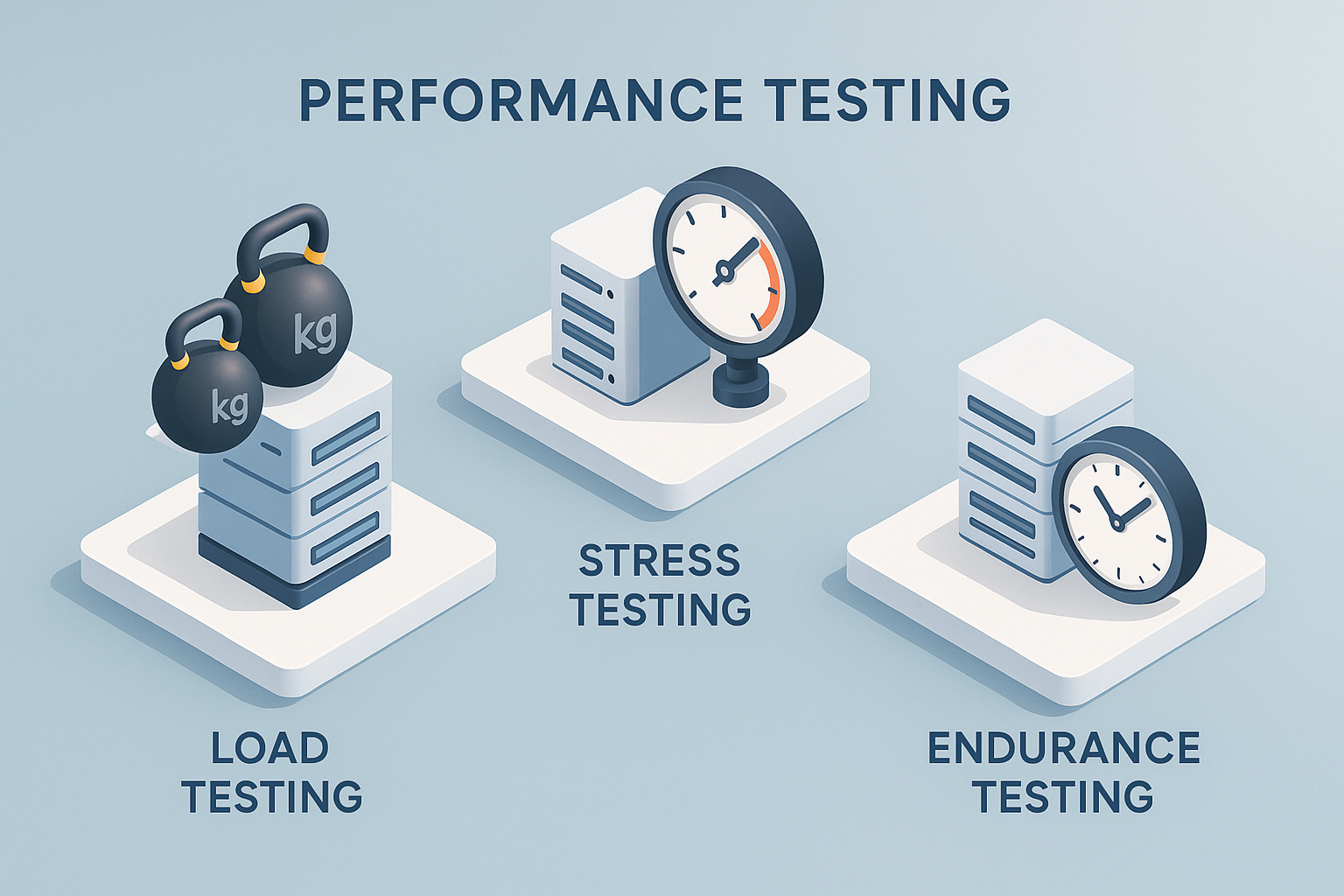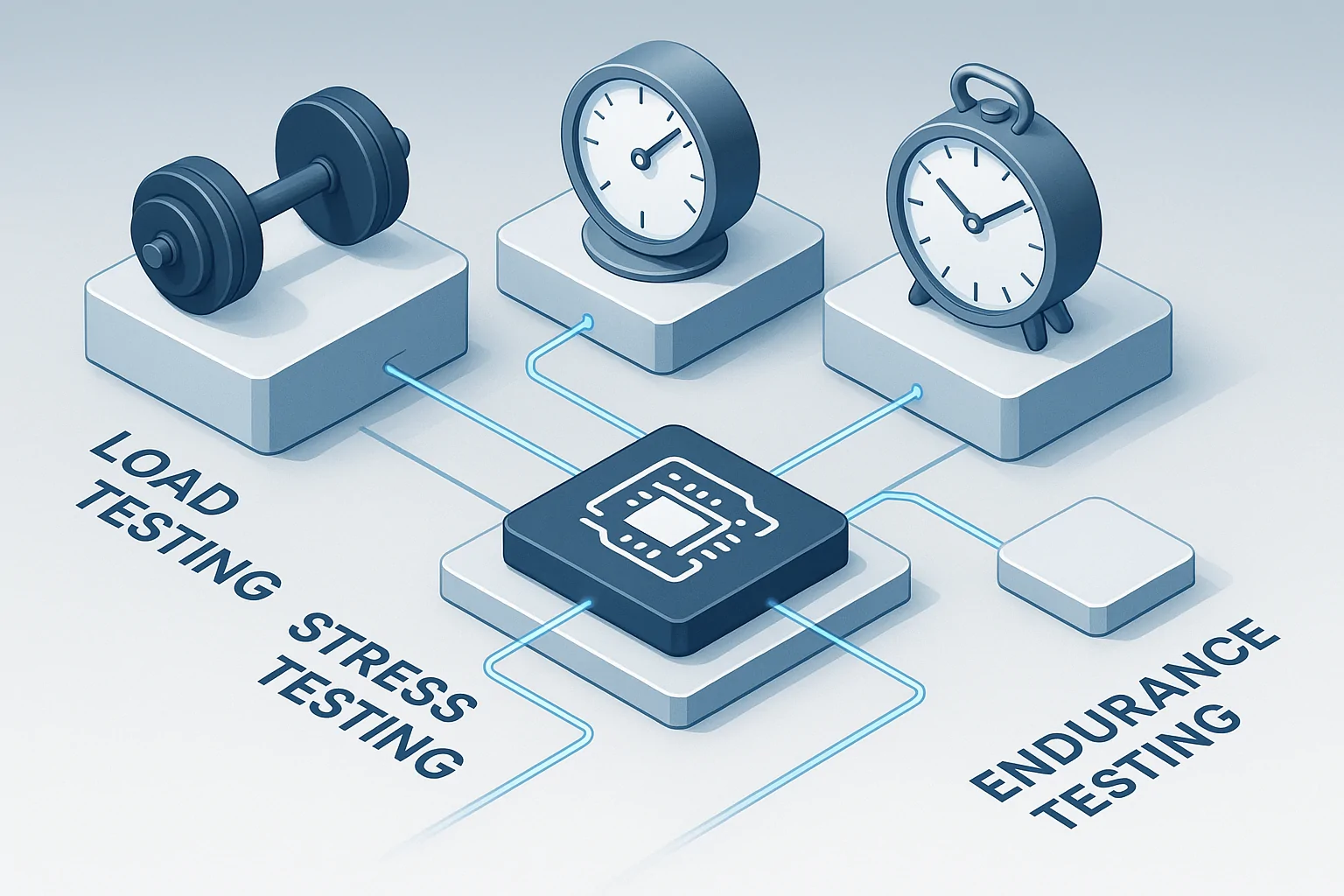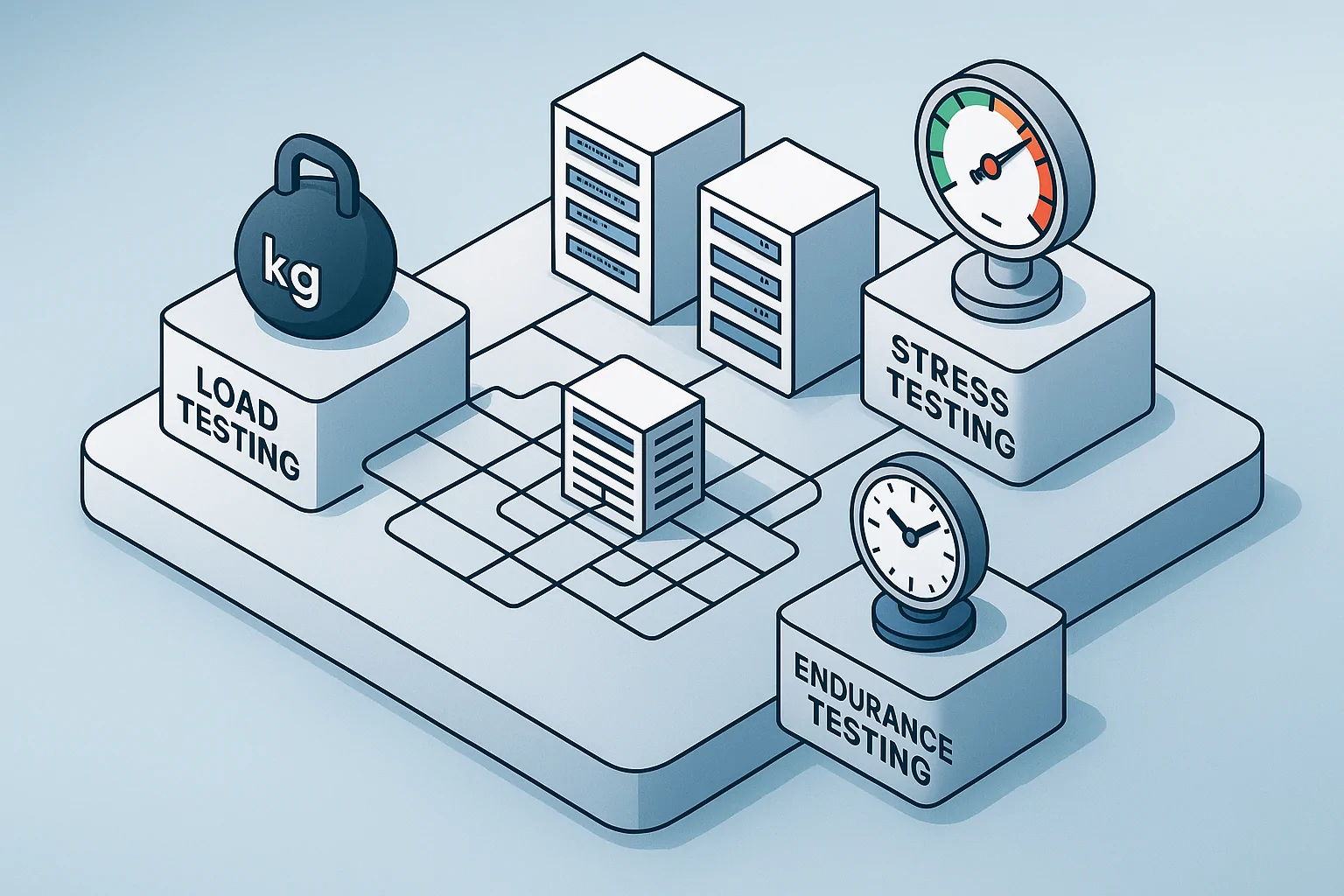In today’s competitive technology landscape, performance testing is no longer just an option – it’s a necessity. It serves as the cornerstone of identifying bottlenecks and optimizing application functionality to meet dynamic user demands. In this guide, we’ll explore specific performance testing metrics and KPIs that are crucial for assessing software reliability and optimization. Moreover, we’ll explain how integrating AI transforms traditional approaches with predictive insights and real-time monitoring, promising unprecedented efficiency and reliability.
- The Fundamentals of Performance Testing
- Key Metrics to Track for Performance Success
- Innovative AI and Automation in Performance Testing
- Enhancing Application Reliability through Active Monitoring
- References
The Fundamentals of Performance Testing
Performance testing evaluates the responsiveness and stability of a system under varying workloads, ensuring optimal application performance. Unlike load testing that focuses solely on user loads, performance testing encompasses several types including load, stress, and endurance testing to gauge a broader range of performance aspects. For an understanding of different performance testing types, you can explore this detailed guide.
Understanding Performance Testing
Performance testing ensures that applications perform as expected when faced with different tasks and loads. It plays a critical role in software development by identifying system capacities and preventing failures. According to Global App Testing, performance testing metrics and KPIs are indispensable for revealing system efficiency and aligning with business goals. Understanding the importance of NFRs in performance testing can further simplify this process.
Types of Performance Testing
Performance testing includes various test types such as load testing for assessing application behavior under expected user loads, stress testing for evaluating performance under extreme conditions, and endurance testing for determining stability over a prolonged period. Utilizing technologies from GeeksforGeeks and others can enhance these processes. For a comprehensive view on load testing, consider looking at how to conduct a load test.

The Role of KPIs in Performance Testing
KPIs, or Key Performance Indicators, measure how effectively performance testing aligns with business objectives. Not only do they help in defining successful testing outcomes, but they also ensure testing activities contribute towards achieving desired business results. Effective KPI utilization is crucial for tracking software quality and performance improvements as noted by experts from LinearB. For further insights into KPIs, the performance metrics that matter can offer valuable perspectives.
Key Metrics to Track for Performance Success
For achieving and maintaining system performance, monitoring key testing metrics is essential. Metrics such as response time, throughput, and error rates provide insights into system behavior and help identify inefficiencies.
Response Time and Throughput
Response time, the instant a user sends a request to when they receive a response, directly impacts user satisfaction. High throughput optimizes processing capacity, essential for system performance under heavy loads. Netflix exemplifies using dynamic clustering for managing real-time traffic, as highlighted by GeeksforGeeks. To learn more about boosting application efficiency, consider reading enhancing user experience with application monitoring.

Monitoring Error Rates
Tracking error rates is crucial as they indicate system reliability and potential issues. Insights from Intermedia Unite underscore the significance of monitoring tools in catching errors early and maintaining system integrity.
Integrating Real-Time Monitoring
Real-time monitoring enhances the precision of performance metrics, providing immediate feedback that supports continuous integration and efficient problem resolution. Such tools are vital for proactive system management as peer reviews on Reddit suggest.
Innovative AI and Automation in Performance Testing
By embracing AI and automation, organizations can revolutionize their performance testing frameworks. AI-powered analytics and automation enable systems to predict and resolve performance issues proactively. Explore 5 advantages of using AI in performance testing for deeper insights.
Predictive Analytics for Bottleneck Identification

AI and predictive analytics tools are pivotal in identifying bottlenecks before they affect systems, enhancing efficiency and user satisfaction. Insights from Tesla’s cutting-edge production innovations showcase AI’s potential in identifying and addressing bottlenecks proactively.
Automation for Self-Healing Systems

Automation fosters the development of self-healing systems, which manage and resolve performance issues autonomously. Insights from TechRepublic on the benefits of automation underscore the possibility of maintaining high system uptime.
The Role of AI in Continuous Integration
AI enhances continuous integration by providing automated, responsive testing frameworks. This integration ensures that performance testing remains adaptive and efficient, aligning with best practices from Atlassian.
Enhancing Application Reliability through Active Monitoring
Active monitoring significantly improves application reliability by continuously detecting and addressing system instabilities before they escalate.
Redundancy and System Uptime
Implementing redundancy measures ensures continuous system uptime, effectively mitigating performance disruption risks. Technical discussions on Reddit emphasize the importance of redundancy in maintaining system availability.
Advanced Diagnostic Tools
Utilizing real-time diagnostic tools provides critical insights into system health and performance, as supported by testimonials from Intermedia Unite. These tools enable swift identification and correction of performance anomalies.
User Feedback and Improvements
Incorporating user feedback into system evaluations helps foster continuous improvement and enhance application reliability. Studies show that real-life user feedback loops are crucial in adapting and refining system functionalities.
In conclusion, understanding and applying performance testing metrics and KPIs are vital for software optimization and reliability. By integrating AI and automation, businesses not only pre-emptively address performance issues but also fortify their system’s capability to adapt and respond efficiently to changing demands. For a deeper dive into AI-driven performance testing strategies, download our comprehensive guide.
References
- Global App Testing, 2025. 23 Key Performance Testing Metrics You Should Track in 2025.
- Global App Testing, 2025. 23 Key Performance Testing Metrics You Should Track in 2025.
- GeeksforGeeks. Performance Optimization Techniques for System Design.
- LinearB Blog. Using KPIs for Effective Software Measurement.
- LinearB Blog. Using KPIs for Effective Software Measurement.
- GeeksforGeeks. Performance Optimization Techniques for System Design.






